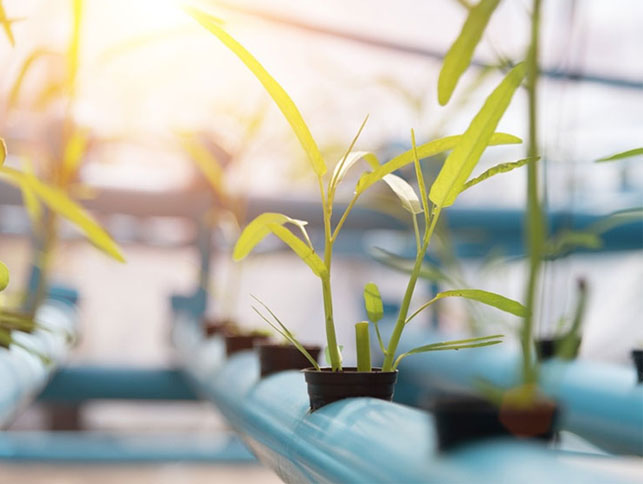This Seed Growing Light can be used to irradiate crops at a specific wavelength. Seed Growing Lights can regulate light at different growth stages, ranging from 0% to 100%, suitable for seed initiation, germination, plant, and flowering. It is very suitable for hydroponic greenhouse plants, such as lettuce, pepper, strawberry, wheat straw, bark, orchid, lemon, green pepper, eggplant, tomato, potato, algae, etc.

The artificial control of the growth cycle of greenhouse fruits and plants is of great importance to the introduction and breeding of plants. Similarly, the South species move to the north and need late-maturing varieties. This requires S1400 Series Grow Lights to regulate the growth cycle of the seeds. The energy-saving of S1400 Series Grow Lights can save 80% of electricity compared with traditional high-pressure sodium lamps and metal halide lamps. It has a long service life, more than 50000 hours, low maintenance cost. The heat is small and can be in close contact with plants.
280 ~ 315 nm - minimal effect on morphological and physiological processes;
315 ~ 400nm - less chlorophyll absorption, affecting photoperiod effect and preventing stem elongation;
400 ~ 520nm (blue) -- the absorption ratio of chlorophyll and carotenoid is the largest, which has the greatest impact on photosynthesis;
520 ~ 610nm (green) - the absorption rate of pigment is not high;
610 ~ 720nm (red) - chlorophyll absorption rate is low, which has a significant impact on Photosynthesis and photoperiodic effect;
720 ~ 1000nm - low absorption rate, stimulating cell elongation, affecting flowering and seed germination;
>1000nm - converted to heat.
The effect of light of each wavelength on seed growth is different. 400 ~ 520nm (blue) light and 610 ~ 720nm (red) light contribute the most to seed growth, while the efficacy ratio of 520 ~ 610nm (green) light is very low. The light source of LED seed growth light is mainly composed of red and blue light source, allowing seeds to accelerate carbohydrate synthesis and vitamin synthesis during growth and shorten the growth cycle.
For the control of lighting distance, it is generally recommended that the distance between the top of the plant and the LED plant light should be controlled between 0.5m-1m. This distance can not only allow the plant to receive sufficient light, but also allow the LED plant light to illuminate a wider area. At the same time, the height of LED plant lights should be adjusted according to the speed of plant growth so as to control the most reasonable supplement position of LED plant growth lights.


Seeds don't always need heat lamp for growing seeds. Unfortunately, there seems to be a common misconception that all seeds need heat lamp for seed germination, but this is not the case.
Different seeds can be germinated at different temperatures. For crops like eggplant and tomatoes, heating and warming led tomato grow lights can be used for germination , but some plants, such as lettuce, prefer to germinate in a cooler environment with lettuce led grow lights.

Every plant grows from seed germination, and most plants cannot grow without the participation of proper light, so is this also true in the seed germination stage?
Some seeds need light to develop well; some seeds develop well in the dark, and light will play an inhibitory role; some need a short period of light to develop well, and a long period of light will have an inhibitory effect.
For the seeds that need light irradiation to germinate smoothly, can be taken with indoor farming led, artificial LED plant light dimming supplemental light or fixed culture solution immersion and other methods can also achieve the desired effect, which shows that certain hormones also have the role of stimulating plant germination.

